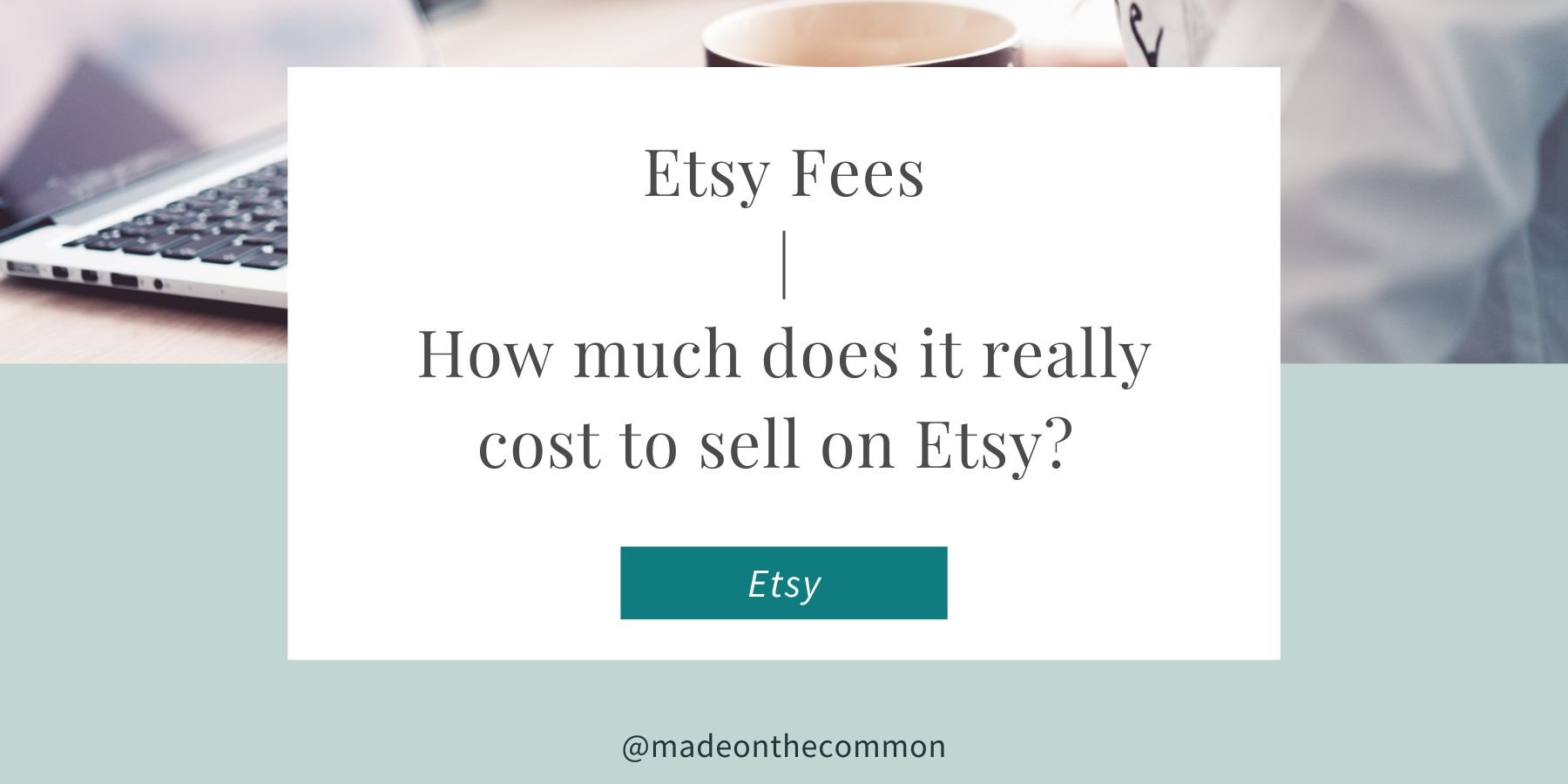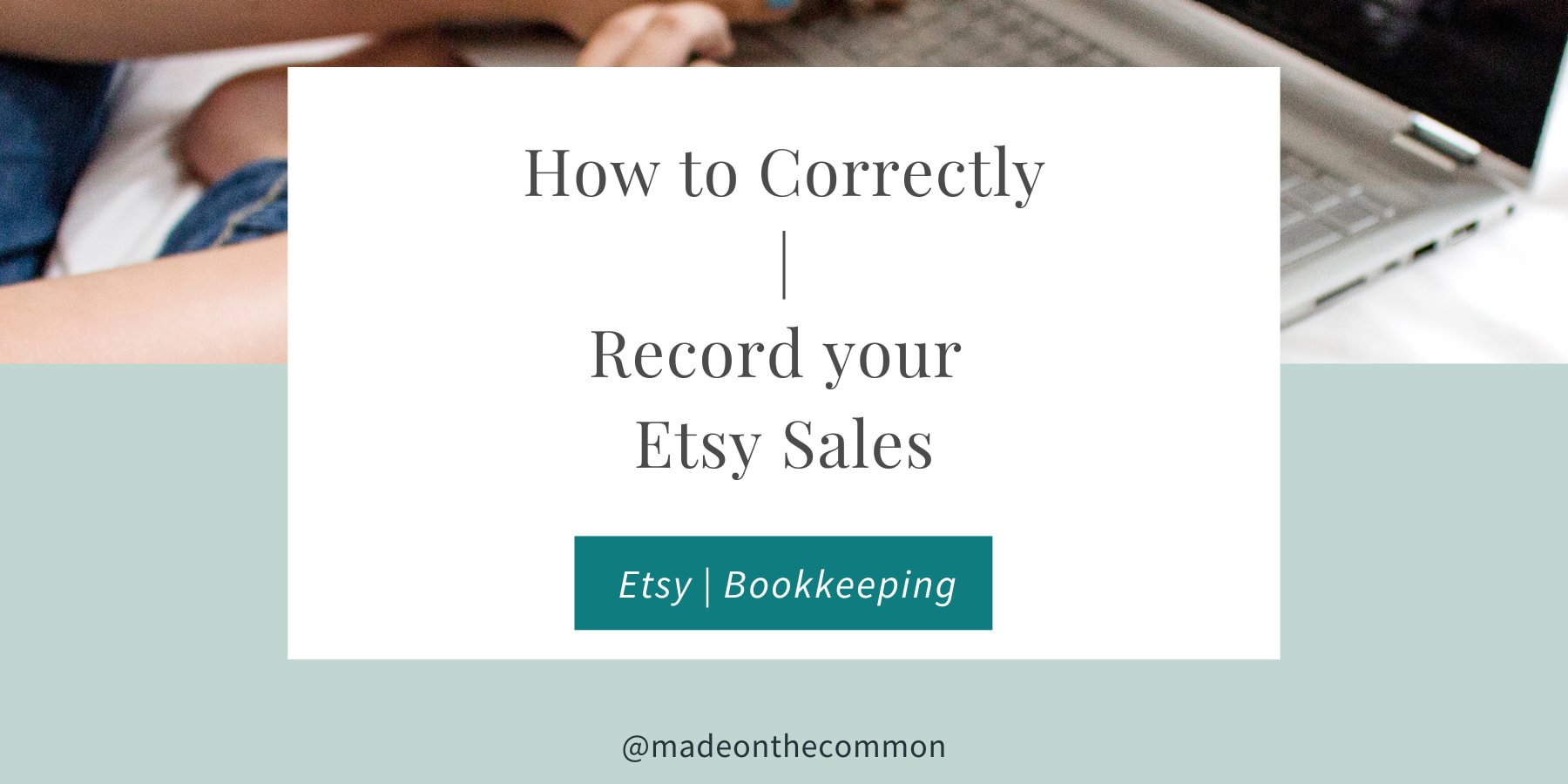Step by Step: How to Tackle your Business Bookkeeping
Part 2 of your Etsy Bookkeeping Guide
Now you’ve got your Etsy bookkeeping routine sorted out - what about the rest of your business?
If you missed reading Part 1 abut the Etsy part of your bookkeeping, you can find it here and don't forget to download your Free Checklist to check off all those tasks as you go along.
You might sell on other platforms (Ebay, Amazon, Folksy etc), on Social Media, in person or on your own website.
Maybe you have other income from advertising or Affiliate income. Maybe you sell an on-line course or offer a membership programme. Etsy is rarely the only way you have of making money.
And let’s not even get into your expenses. You’ll have the costs of making your product, shipping it to customers and marketing. You’ll have office expenses, utilities, training and might even employ other people to help you out.
The good news is that we can follow exactly the same structure as before:
Get Organised
Prepare your information
Calculate your numbers
Record your Transactions
Sort out your financial housekeeping
Finalise your Year End.
Let’s dive in!
Get Organised
If you’ve already been through Part 1 of this series then you should be pretty well organized already.
You’ll have looked at your business and chosen a bookkeeping solution that’s right for you.
You’ll know the key dates for your tax filing and will have an understanding of the paperwork and numbers that you need.
If you’re really on point you’ll already be in contact with a local professional and be getting guidance from them on what information they need from you.
If not then why not take a little time out now? The last thing you need in the middle of year end (which usually falls just after the busy holiday season) is to be chasing around trying to get everything organised and finding out what you need to be doing.
Prepare your business bookkeeping information
Before you dive into the details you need to get everything prepared. You’ll already have downloaded all your Etsy data but what about everything else you need for your business.
Bank Statements and Credit Card Statements -
Download and print or grab the hard copy and go through it highlighting everything that relates to your business. Make sure you do this for any Payment Method that you’ve used for your business.
Hint: This is far easier if you keep to a dedicated bank account and credit card.
Gather other Sales Information
Make a list of everywhere that you’ve sold your products over the last year. Then find the sales confirmations for each one. Most online platforms have a way to download transaction data so this is usually easier to use then manually going through every sales order.
Unfortunately, if you've made physical sales then you may have to go through your manual records.
Gather Expense Receipts and Invoices
The more frequently you do this the easier it will be! Again try to keep to 1 or 2 ways to pay for business expenses . This makes it easier to make sure you’ve claimed for everything that you should.
You need evidence of what you have spent so keep a folder on your email service for purchases and/or print out all your confirmations.
There are also apps that you can use to scan and save all your receipts if you prefer to stay paperless.
Calculate your numbers
As with Etsy you may need to make some adjustments to your sales numbers to make sure that you accurately reflect your tax and your shipping. I suggest doing this before you start recording your numbers so you don’t have to go back and forth.
Record your Transactions
Now is the time to start entering all your transactions to your bookkeeping template / software.
Income
Enter all your sales from outside Etsy. I recommend keeping each source separate so that you can review your figures later on to see where your sales have come from. Particularly if you want to look at changing or reducing the number of platforms you’re maintaining.
If you have other income then add this as well. Any money received from a 3rd party should be included in your sales > Including shipping that you have charged to customers.
If you have been paid for services you’ve provided then this should also be added.
And don’t forget:
Advertising income from your website
Money received from Affiliate Programmes
Don’t forget to take off any Refunds that have been given to customers. These should always be shown as a “negative” sale to reduce the total sales income.
And take off any discounts that customers have used - you want the actual amount paid for the product.
Expenses
Cost of Goods Sold / Materials Used
This is probably one of your biggest expenses and how you record it depends on the type of accounting you are using.
If you use cash based (Allowed for small sole traders in UK) then you can simply record the money paid for materials when you buy them (regardless of whether the products made have been sold).
If you are using traditional / accrual accounting (required for larger businesses and in most of the US) then you can only record your materials when the item made is sold. This is known as “Cost of Goods Sold”
When you buy the material it goes into your stock/inventory. Then, when you sell the final product you take it out of inventory and record it as a cost against your sale.
This is a much larger subject that I’ll cover in a dedicated post but for now just make sure you record somewhere everything you have spent on materials in the period.
Other Expenses
Now is the time to review your bank statement and credit card for all those items you highlighted earlier and record them in your books.
You should record the date, supplier, category, description and price paid.
Cash Expenses
If you paid cash for anything then you also need to include these in your records. Make sure you have a receipt and can prove that the expense was for business purposes and allowed for tax.
Sort out your financial housekeeping
Keeping your records straight at the end of each month will make year end go far more smoothly.
Print off / save your report for the month so you can see where you are.
Reconcile your bank account
This means checking that everything on the bank statement has been recorded and there are no unexpected items that you need to investigate.
If you have made payments that have not yet gone through your bank account make sure you keep an eye out for them in the future and don’t double count.
Review your overall Profit
If you have costs coming up in future months and are not making as much money as you had expected then now is the time to review and adjust future spending to hit your profit goals. Do you have any subscriptions / contracts that are due for renewal that you want to change? Never auto-renew without deciding if you are still receiving value for money.
Save and File
Save all your files into a designated folder and name appropriately.
Don't forget to save all hard copy receipts / invoices and reference them if you have a lot of documents so you can find them again if needed.
Savings
Based on your figures to date you should calculate an approximate amount that may be needed to pay tax and transfer to a savings account. This will help you keep this money separate from the rest of your business cash flow and avoid an unexpected tax bill to pay at the end of the year.
If you have been under your tax thresholds in the past but think you'll hit them before the end of the year, it is good practise to start saving now.
Future Investment
If you have equipment that will need replacing in the future or you would like to upgrade your equipment to make your business more efficient then start to put some money away for this so that you have an investment fund established.
Finalise your Year End.
If you have been keeping on top of your business bookkeeping all year then your year end process will be little different and so simple!
Closing Inventory
If you need to account for inventory at year end then make sure to do a physical count as close to year-end as possible. You will then need to make a cost of goods adjustment in your books to account for this.
Save your final P&L report
Once you are happy that you have included everything in your records you can save your final report.
Send to your accountant
This is when you can send over your figures to your accountant. Having detailed records that they can review will reduce your overall costs and make the process go really smoothly. Your accountant can review your figures, make sure you have complied with tax and accounting rules and suggest ways to save money on your taxes.
If you’re confident with your figures and happy to go it alone then you can always miss this step. I would always recommend getting your accounts reviewed by a professional though - just in case!
Complete your tax paperwork or review submission
Depending on what work you have agreed that your accountant will do for you, you may need to fill in your tax paperwork yourself. Regardless of who completes this, you should always review it so that you have full ownership for your figures.
Submit your tax return
Again your accountant may do this for you. Just make sure you’re clear on who is actually submitting your paperwork and when the submission is due.
Pay any tax due
If you owe tax for your business then make sure to pay it before the deadline - you don’t want to be paying fines or interest on top of your tax.
Prepare a budget for next year
Now is the perfect time to review your figures for the previous year and set a budget for the new one. Look at your income and see how you could increase this. Maybe raise prices, increase order sizes or drive more visitors to get more sales.
What about expenses - what did you pay for last year and never really use? Can you cancel that subscription or change providers?
What do you need to invest in next year? New equipment, getting some assistance, more space?
Having a plan will help you focus your efforts and hone in on where to spend your time and money.
Set up your bookkeeping file for the new year.
Now you know what needs to be done to keep on top of your business bookkeeping you can get set up for the new year and do it all again!
Remember - they're only numbers after all.
Sarah x
PS. If you haven't already done so, why not grab yourself your Free Bookkeeping Checklist now and start ticking off those tasks
Why not Pin this so you can come back to this article later?













